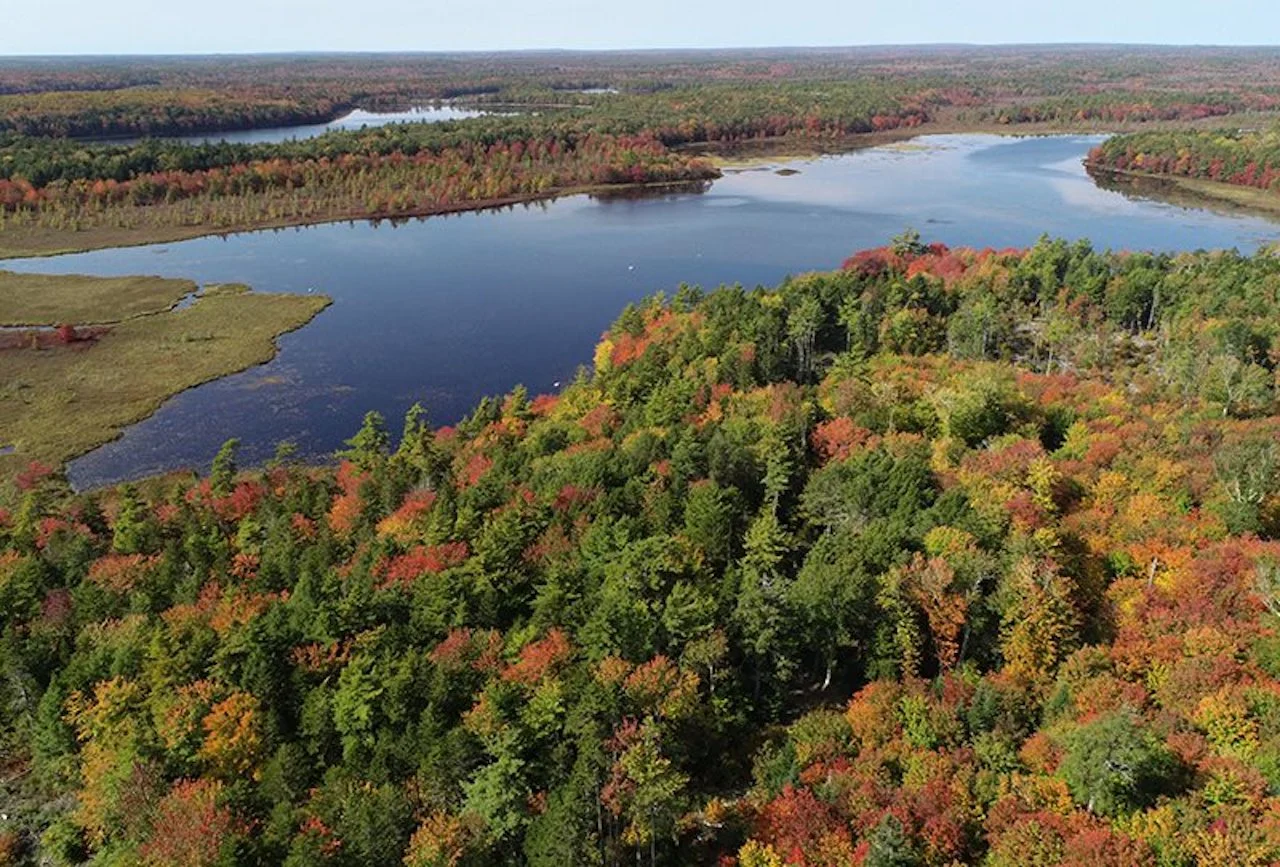
Vital protection covers large section of rare forest in Nova Scotia
The Nature Conservancy of Canada's (NCC) securement of 1,094 hectares of mature Wabanaki-Acadian forest in Nova Scotia includes 25 kilometres of undeveloped lakefront shoreline and freshwater wetlands in Upper Ohio.
Call it a major victory for conservation in Nova Scotia.
On Tuesday, the Nature Conservancy of Canada (NCC) announced a monumental acquisition of a private land conservation area in Nova Scotia. The not-for-profit conservation organization bought 1,094 hectares of mature Wabanaki-Acadian forest, which includes 25 kilometres of undeveloped lakefront shoreline and freshwater wetlands in Upper Ohio.
The group said the project is the third-largest purchase in NCC’s 50-year history in the Maritime province. With this procurement, the non-profit conservation group now protects approximately 9,300 hectares in southwestern Nova Scotia through the establishment of various nature reserves.
SEE ALSO: Bison given to First Nations community marks historic moment
According to NCC and the Atlantic Canada Conservation Data Centre (ACCDC), the property has seven lakes on it. The site also contains 24 different parcels and may have been earmarked for development if NCC didn’t acquire it.

Upper Ohio, N.S. (Mike Dembeck)
“I would like to thank all project supporters, along with our government partners, for helping the Nature Conservancy of Canada assemble this large area of intact wetlands and forest," said Jaimee Morozoff, NCC program director in Nova Scotia, in a news release.
"For the benefit of people and wildlife, it is vital to conserve and protect the remaining important natural landscapes we have. All donors have made a long-term difference to wildlife in this province."
HUNDREDS OF SPECIES FOUND ON THE SITE
In total, there are 450 different types of species on the site, according to NCC and ACCDC, including 300 various plants, some of rare nature. Also included are 66 bird breeds, 15 of which are rare and three are endangered.
Among tree species on the property are large eastern hemlock, sugar maple, red maple, red spruce, white birch, balsam fir, white pine, white birch and aspen trees. These types are distinctive of the original Acadian forest of the Maritimes, the NCC said.

Upper Ohio, N.S. (Nature Conservancy of Canada)
After centuries of harvesting, only one to five per cent of mature Acadian forest is still intact in the region.
The wetlands also provide critical habitat for wildlife including eastern painted turtle and snapping turtle, both listed as species of special concern, as well as migratory waterfowl, such as Canada goose, mallard, wood duck, ring-necked duck and American black duck. The area also houses rare plants, such as Virginia meadow beauty, swamp loosestrife and long-leaved panic grass.
“Land conservation is essential for Nova Scotia’s environmental health, economic growth and prosperity, and ensuring a sustainable future for our province," said Timothy Halman, Nova Scotia's environment and climate change minister, in the news release. "The Nature Conservancy of Canada’s leadership in our province will provide climate resiliency and benefits for generations of Nova Scotians."

Upper Ohio, N.S. (Mike Dembeck)
The Upper Ohio conservation area is largely surrounded by conserved lands within the Indian Fields Provincial Park and Tobeatic Wilderness Area. The new project falls within the UNESCO biosphere reserve -- one of only 18 in Canada.
The next step for NCC is to create a property management plan to identify conservation priorities and examine how people can be welcomed to the site for passive recreational uses.
Thumbnail courtesy of Mike Dembeck.
Follow Nathan Howes on Twitter.











